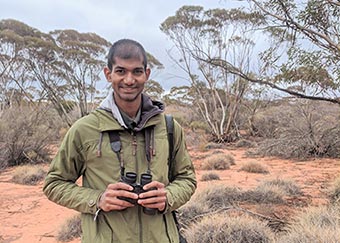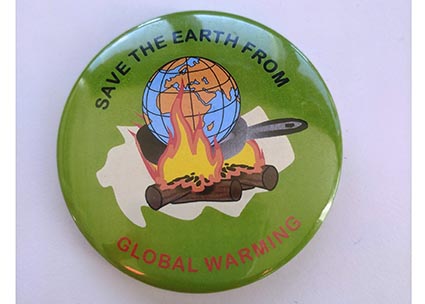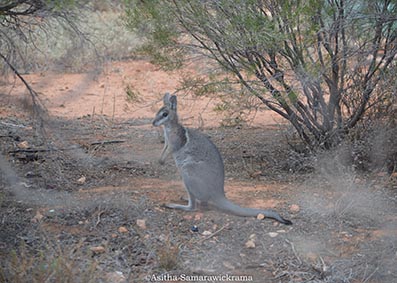Asitha Samarawickrama: Humans of BioSciences
Meet Asitha Samarawickrama, who has just completed his Honours with the Quantitative and Applied Ecology (QAECO) group in the School of BioSciences investigating how thermal imaging technology can be used to locate threatened mammals. Asitha is passionate about new technologies that can be utilised to help save rare and threatened species. “My dream is to see species being removed from threatened species lists, thanks to technology and the work of everyone fighting to protect biodiversity.”

How did you become interested in science?
I was born and raised in Sri Lanka. My passion for the environment began when I was around 10 years old and saw a newspaper headline that said Sri Lanka’s cloud forests were threatened by global warming. I started trying to find out more about global warming and the more I read, the more worried I became. I felt very overwhelmed, but I realised that I had to do something to increase awareness about the issue. I made some badges with the slogan “Save the Earth from Global Warming” with a picture of the earth on fire on a frying pan. I distributed these badges to my family and friends, started talking about climate change, and wore the badge everywhere I went. Sometimes people would ask me what it meant, which was great because I could talk to more people about this issue.
Throughout my school years I spent my holidays walking in Sri Lanka’s forests, watching birds and photographing animals. My interest in environmental issues continued to grow. I wanted to learn more about how I could change the world for the better, so it was a pretty straightforward choice for me to choose environmental science as my degree.

What problem were you trying to solve with your research?
I did my research with Dr José Lahoz-Monfort and Professor Brendan Wintle at QAEco in partnership with the Australian Wildlife Conservancy (AWC), at their property in Scotia, NSW. We compared the effectiveness of spotlighting and thermal cameras to detect small and medium-sized (between 35 g and 5.5 kg) threatened mammals. These mammals in Australia have been hit hard by habitat loss and the introduction of feral predators like cats and foxes. We wanted to see if thermal imaging technology could be useful for finding these mammals. By knowing where these animals are, we can help conservationists and managers protect them.
We found that the probability of finding these mammals when using a handheld thermal camera was much higher compared to when using a spotlight. The handheld thermal camera also detected animals at much further distances compared to the spotlight. This is very promising because it shows that new technology can be adopted to help save some of Australia’s rare and threatened species. We are already seeing new technology being used to save species around the world and it is a really exciting space to work in. My dream is to see species being removed from threatened species lists, thanks to technology and the work of everyone fighting to protect biodiversity.

What do you enjoy doing outside of science?
When I’m not doing science, you’ll find me playing or watching sports, out in the bush or hanging out with friends! I play cricket in the summer and I try to stay active in winter by playing tennis or squash. I also love being out in nature, trying to find and photograph wildlife and exploring new places with my friends.
Do you have any advice for undergraduate students?
Try and take a broad range of subjects during your undergraduate years. Not only will you learn a lot of different things, but later on if you are looking to specialise, it will help you identify what you’re really passionate about.
Find out more
Quantitative and Applied Ecology (QAECO)
Australian Wildlife Conservancy (AWC)
Asitha Samarawickrama on Twitter: @BirdmanSamare Instagram: @birdmansamare
'Humans of BioSciences' is a special series to introduce the School of BioSciences' undergrad and postgrad students, our academics, professional staff and associates.